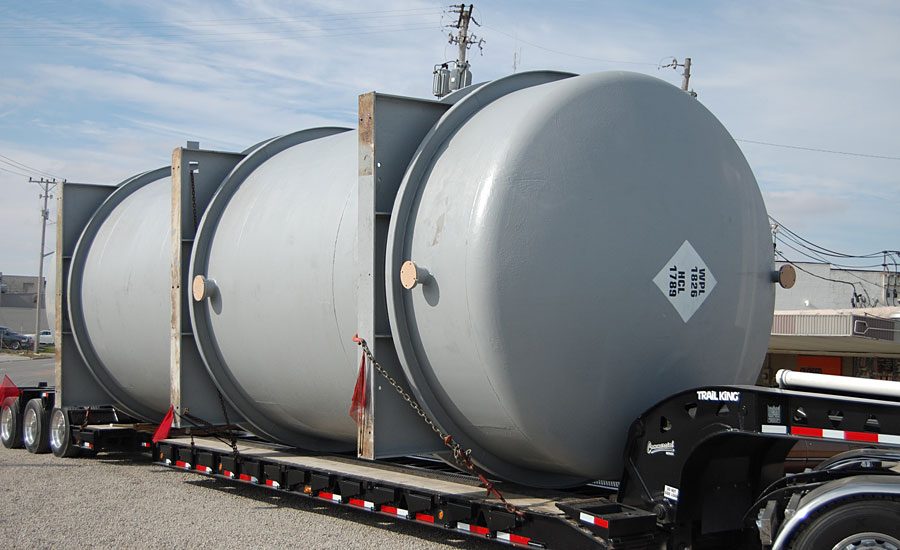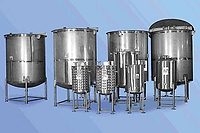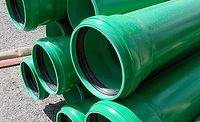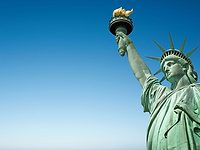The use of corrosion-resistant lined storage tanks, process tanks and vessels has continued to expand in the manufacturing sector. This includes the power generation, steel, corn processing, chemical processing water filtration and metal finishing industries.
For many of them, the purchase and repair of these tanks is a time-consuming process that often requires planning, coordination, added transportation and scheduling as well as quality issues. Basically, these issues stem from one primary reason: they are having their tanks fabricated and linings applied by two different suppliers.
Although this scenario is common enough in the industry, companies that source custom-fabricated, corrosion-resistant lined tanks from a single source can save on the purchase price and speed delivery, while assuring that their tanks and liners are designed and built to maintain integrity.
A Combination of Specialties
To be sure, the fabrication of tanks or other vessels and the subsequent application of linings are unique specialties, which is why manufacturers typically contract with two separate suppliers.
For tanks that are constructed at the plant (rather than in the field), fabrication entails sophisticated processes and equipment plus the availability of metals containing specific alloys. Fabrication facilities must include extensive lifting capabilities and equipment such as heavy-duty break presses, plate rolls, automated submerged-arc welding, and CNC plasma burning machines.
The formulation and application of coatings for tank linings is also a highly sophisticated business that involves materials such as rubber linings, epoxies, vinyl esters, polyesters, alkyds and specialty coatings. In some cases composite fiberglass lining systems are required, applying a fiberglass-reinforced resin basecoat combined with an abrasion-resistant topcoat. The application of linings such as rubber membranes to contain highly corrosive acids may require the use of high-pressure steam vulcanizers in order to cure the rubber lining.
Plus, surface preparation work such as sandblasting, in conjunction with spark testing, is required to ensure there are no pinholes or other breaches in the membrane where chemicals could undermine the lining and eventually cause a failure.
Avoiding Construction Issues
When companies source lined tanks from two separate suppliers, they are likely to experience difficulties that can be avoided when a fully lined tank is sourced from a single supplier.
Single-sourcing of a lined tank means one point of contact. This can be advantageous when construction issues need to be addressed. Dealing with two suppliers may lead to construction disagreements or the suppliers finding fault with one another, which usually places the buyer in the middle of such issues.
“Years ago I had a tank built by one supplier and then had it shipped to another supplier for rubber lining,” says Jerry Cogar of Cogar Consulting Group (Columbia Station, OH), a provider of turnkey chemical solutions to the industry. “The liner installer complained that the lining was not going to get proper adhesion. On another occasion, welds needed to be ground before the lining could be installed. These types of problems can seriously delay projects.”
Cogar works with customers who store and handle hazardous chemicals such as hydrogen fluoride (HF) and nitric acids (HN03), typically 6,000-10,000 gal. capacity. He’s been contracting tanks from Moon Fabricating Corp., a Kokomo, IN-based company that is one of the country’s largest suppliers of custom-fabricated, fully lined, corrosion-resistant tanks. Founded in 1923, Moon Fabricating has built many types of lined tanks and other vessels for the industry throughout North America.
“Moon Fabricating is consistently reliable” Cogar says. “They do it all from fabrication and weld testing to the finished liner. If it’s not right, they make it right before going on to the next step. I’ve been recommending tanks from Moon for over 20 years.”
Moon fabricates tanks weighing up to 60,000 pounds from carbon steel, stainless steel and specialty alloys, and installs a wide variety of protective linings composed of rubber linings, Koroseal, Carboline, Plasite, Tnemec and many other specialty coatings. In addition, installation of abrasion-resistant rubber, abrasion-resistant ceramic tile, alloy wear plates and abrasion-resistant alloy hard facing is available.
“Moon is currently building two hydrogen fluoride tanks for me that are going to require several special manufacturing steps,” Cogar says.” The tank material is a specific grade of steel (A516-70 grade), which is readily available from this supplier. Also, they provide 100 percent X-ray imaging of all tank welds, which is a valuable quality assurance step.”
Providing Dual Consultation
Another company that has found synergy in single-sourcing fully lined tanks is Haynes International, Inc. (Kokomo, IN), a leading developer, manufacturer and marketer of high-performance nickel- and cobalt-based alloys used in corrosion and high-temperature applications.
We have two pickling facilities with acid dip tanks that we use to remove impurities from our metals, and also Kolene “salt” tanks where contaminants such as scale are removed from metals,” says Dick Foster, Superintendent of the North Mill Operations for Haynes International. “All of these are very caustic environments, and we are naturally concerned about tank integrity as well as other design considerations.”
Foster, who has been with Haynes International for 35 years, has relied on Moon Fabricating when new lined tanks are built or older liners repaired or replaced in the field. He adds that he looks to this supplier in part because of its technical support capabilities.
“Moon has consulted with us on several designs, and they are very well versed on both the tanks and the various types of linings,” Foster explains. “If we tell them what type of environment we’re going to have with the tanks, they can help us make sure we choose the right material for the tanks and linings.”
Foster adds that in a recent acid storage project, Moon coated both the outside and inside of the tank and also installed bumpers to create an internal cushion. “They brought it in as a complete unit, then got us hooked up and ready to get online,” Foster says.
Savings on Turnaround and Freight
When a company commissions the fabrication of a tank in one location and application of a liner at a plant perhaps hundreds of miles away, there will obviously be added freight costs involved and most likely additional delivery time.
“Having a single-source supplier is a real benefit,” Cogar says. “If I have a tank made in Cleveland and have to ship it to Kokomo to get it lined, I get a sizable freight charge in addition to the time consumed during shipping. Dealing with Moon Fabricating, they just move the tank from one room at their plant to the other, and install the lining at the same facility.”
At the same time, single sourcing saves time from a purchasing perspective, on inspections, in engineering, and in the communication of specifications or drawings.
“One-stop sourcing saves headaches and delays on scheduling, and paperwork and communications,” Cogar adds. “Moon provides me with drawings in a heartbeat, so I know exactly what we’re talking about in terms of specifications and everything else. Avoiding red tape is a big advantage.”
For more information, contact Moon Fabricating Corp., 765.459.4194, Email gveach@moontanks.com, or visit www.moontanks.com.








Report Abusive Comment